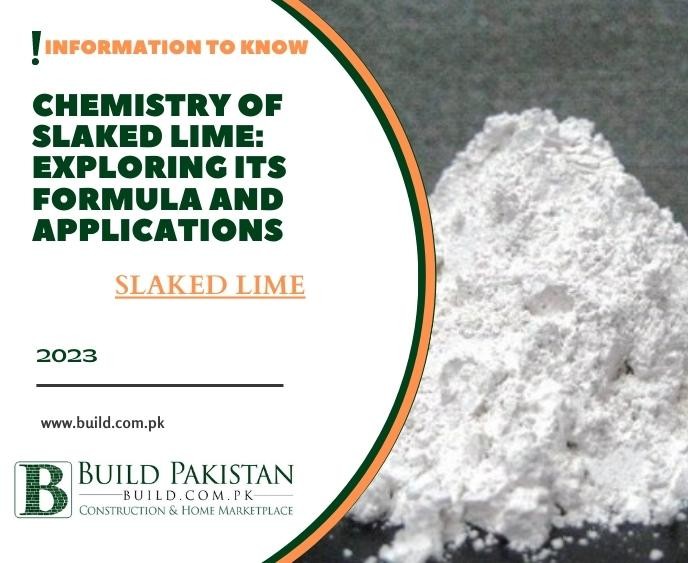Chemistry of Slaked Lime: Exploring Its Formula and Applications

Introduction:
Slaked lime, also known as calcium hydroxide,
is a chemical compound that has played a pivotal role in various fields
throughout history. From construction and agriculture to medicine and industry,
its versatile properties have made it an indispensable ingredient. In this
comprehensive blog, we'll delve into the world of slaked lime, unraveling its
chemical formula, production process, properties, and the diverse range of
aplications that have made it a cornerstone of human progress.
Understanding the Chemical Formula:
The chemical formula of
slaked lime is Ca(OH)₂, which represents one calcium atom (Ca) bonded to two
hydroxide ions (OH⁻). This simple but significant arrangement of atoms forms
the basis of slaked lime's structure and properties.
Production Process of Slaked Lime
The production of slaked
lime involves a chemical reaction between calcium oxide (quicklime) and water:
Calcium Oxide (Quicklime):
Quicklime, also known as calcium
oxide (CaO), is obtained by heating limestone (calcium carbonate) in high-temperature kiln. This process, known as calcination, releases carbon
dioxide, leaving behind calcium oxide.
Hydration Reaction:
When quicklime is mixed with water (H₂O),
a chemical reaction occurs, leading to the formation of calcium hydroxide
(Ca(OH)₂) and releasing a significant amount of heat. This process is
exothermic, meaning it generates heat.
Physical and Chemical Properties of Slaked Lime
Slaked lime
possesses several notable properties that contribute to its wide range of applications:
Alkalinity:
Calcium hydroxide is an alkaline compound, which
means it has a high pH value. It can neutralize acids and is commonly used as a
pH regulator.
Solubility:
Slaked lime is sparingly soluble in water, and
the resulting solution is known as lime water. This solution has applications
in medicine and various chemical processes.
White Powder:
In its solid form, slaked lime appears as a
fine white powder. This powder has a variety of uses, from contruction to
agriculture.
Applications of Slaked Lime
Construction:
Slaked lime has been used for centuries in
construction as a mortar component. When mixed with sand, it forms a paste that
hardens over time, creating a strong and durable binding material.
Agriculture:
In agriculture, slaked lime is applied to soil
to improve its pH balance and promote better nutrient absorption. It also acts
as a pesticide and soil conditioner.
Water Treatment:
The alkaline nature of slaked lime makes it
effective in water treatment processes. It can be used to soften water and
reduce acidity.
Food and Beverages:
Slaked lime is sometimes used in food
processing, such as in the production of tortillas, whee it helps in loosening
the husk from corn kernels.
Medical and Dental Applications:
Slaked lime, in the form of
lime water, has been used in traditional medicine to treat digestive disorders.
In dental procedures, it is used to remove dead tissue from teeth.
Precautions and Safety Considerations:
While slaked lime
offers numerous benefits, it's essential to handle it with care due to its
alkaline natue. Direct contact with skin or eyes can cause irritation.
Protective equipment and proper ventilation are recommended when working with
slaked lime.
Conclusion:
Slaked lime, with its chemical formula Ca(OH)₂, is more than a compound—it's a foundational element of progress across various domains. From its role in construction and agriculture to its applications in water treatment, food processing, and medicine, slake lime's versatility and unique properties continue to shape the course of human endeavors. As we explore its chemical composition, production process, and myriad uses, we uncover the remarkable impact of this unassuming compound on industries and practices that have stood the test of time.









